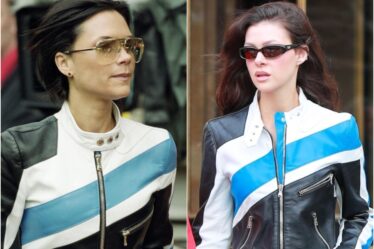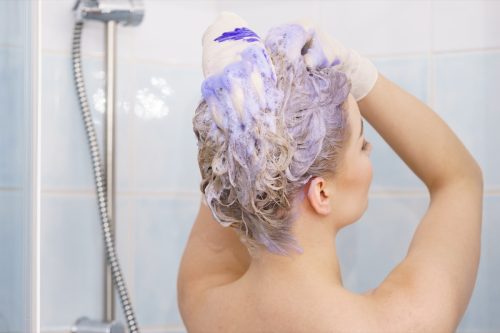
This post contains affiliate links. If you use these links to buy something, we may earn a
commission.
Going to the salon and getting a fresh cut, or even just a blowout is a great feeling no matter the color or style of your hair. The stylists know best, and let’s be honest, there’s nothing better than a shiny, healthy new look. But even in-between visits, it’s important to take care of your hair the right way—especially if you’re rocking gray. As you age and your hair changes color, it can become coarse and more dry, so you want to make sure you aren’t doing anything that is hurting your hair without realizing it. Keep reading to hear from beauty experts about the styling mistakes you never want to make if you have gray hair.
READ THIS NEXT: 5 Benefits of Letting Your Hair Go Gray, According to Stylists.
While adding in purple shampoo is helpful, it shouldn’t be used everyday. Watson Anthony, the editor-in-chief for Hairstyle Camp, shares that if you prefer your shade of gray to be light or closer to white rather than dark and dingy or if you want to keep the yellowing or brassiness that may come naturally with gray hair at bay, purple shampoo is a must. But while having it in your haircare routine is a must, it shouldn’t be used everyday.
“Purple shampoo is perfect every few washes, but when used too often, it can actually cause your hair to be a light shade of purple,” he says. It should be used in tandem with your other shampoo and not used as a replacement.
“I recommend first washing with a clarifying shampoo to remove buildup, then shampooing again using the purple shampoo to cancel out the yellow,” says Dawna Jarvis, a former salon owner and master stylist at the Canyon Salon.
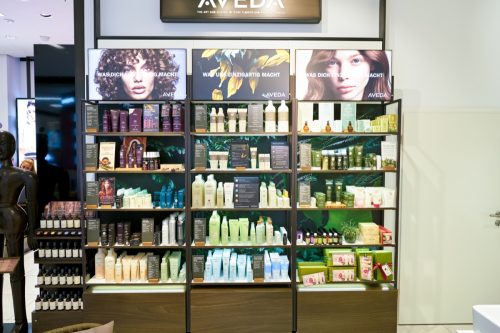
Gray hair retains less moisture than other hair colors and can often have a wiry feel to it, so it’s extra important to use an ultra-moisturizing shampoo and conditioner to combat the coarseness.
Cody Renegar, a celebrity hairstylist to stars like Marie Osmond and Gwyneth Paltrow, recommends Aveda Blue Malva shampoo and conditioner to his clients with gray hair. “It’s a mild cleanser and it gives a silvery brightness to gray hair while also maintaining hydration,” he says.
If you really want to guarantee hydrated gray hair, adding a weekly conditioning treatment to your haircare routine is also a must. Jarvis suggests to using a deep conditioning treatment after using the purple shampoo to replenish the moisture in your hair.
For more beauty advice delivered straight to your inbox, sign up for our daily newsletter.
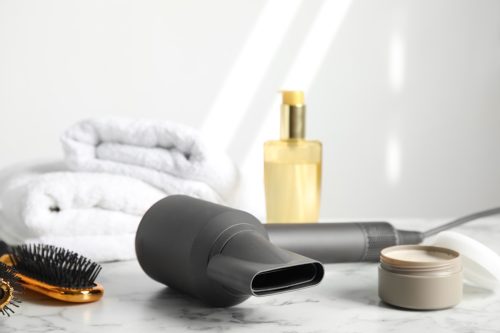
Hair tends to produce less oil as you age and begin to go gray, which can make your hair become even more brittle. And if you style it with heat, breakage and split ends are more likely to occur, explains Anthony.
“You should avoid using hot styling tools too often, as this can cause more damage,” he says. Heatless curlers or other styling tricks like leaving braids in your hair overnight are incredibly helpful alternatives when it comes to preserving your hair health.
If you must blow dry, straighten, or curl you hair, it’s crucial to remember to use heat protectant. This can be applied before you put heat on your hair to prevent more damage.
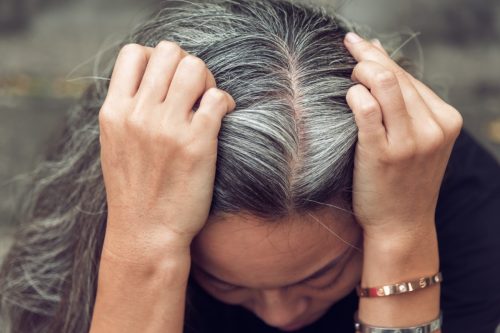
When styling your hair, you should steer clear of anything that has a powder base.
“Gray [hair] needs more shine, not anything that will contribute to dullness,” Reigan Roan-Zapatier, a hairstylist at Julien Farel Salon, tells Best Life.
These products can also cause more build-up on your scalp which can lead to irritation. As nice as it may be to skip a hair wash and use some dry shampoo from time to time, side effects like dullness, dandruff, and scalp inflammation may not be worth it in the long run.
READ THIS NEXT: If You’re Over 65, This Hairstyle Is Aging You, Experts Say.
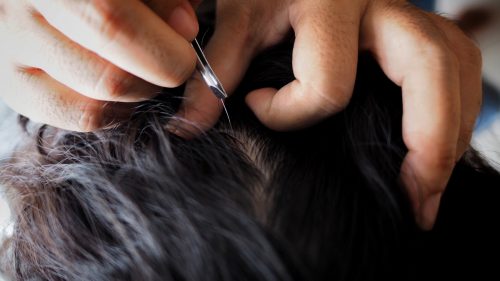
As tempting as it might be to get rid of those stray grays, it’s not so great for your scalp or your hair. If you haven’t let yourself go fully gray yet, it’s best to just leave those strands as they are.
Jarvis says this is a definite no-no not because more gray will grow back in its place as many say, but because none might. “In some cases, plucking causes permanent damage to the hair follicles, so the hair will not grow back,” she says.
It’s safe to say a natural color-changing process (or just embracing them) is better than losing hair.



